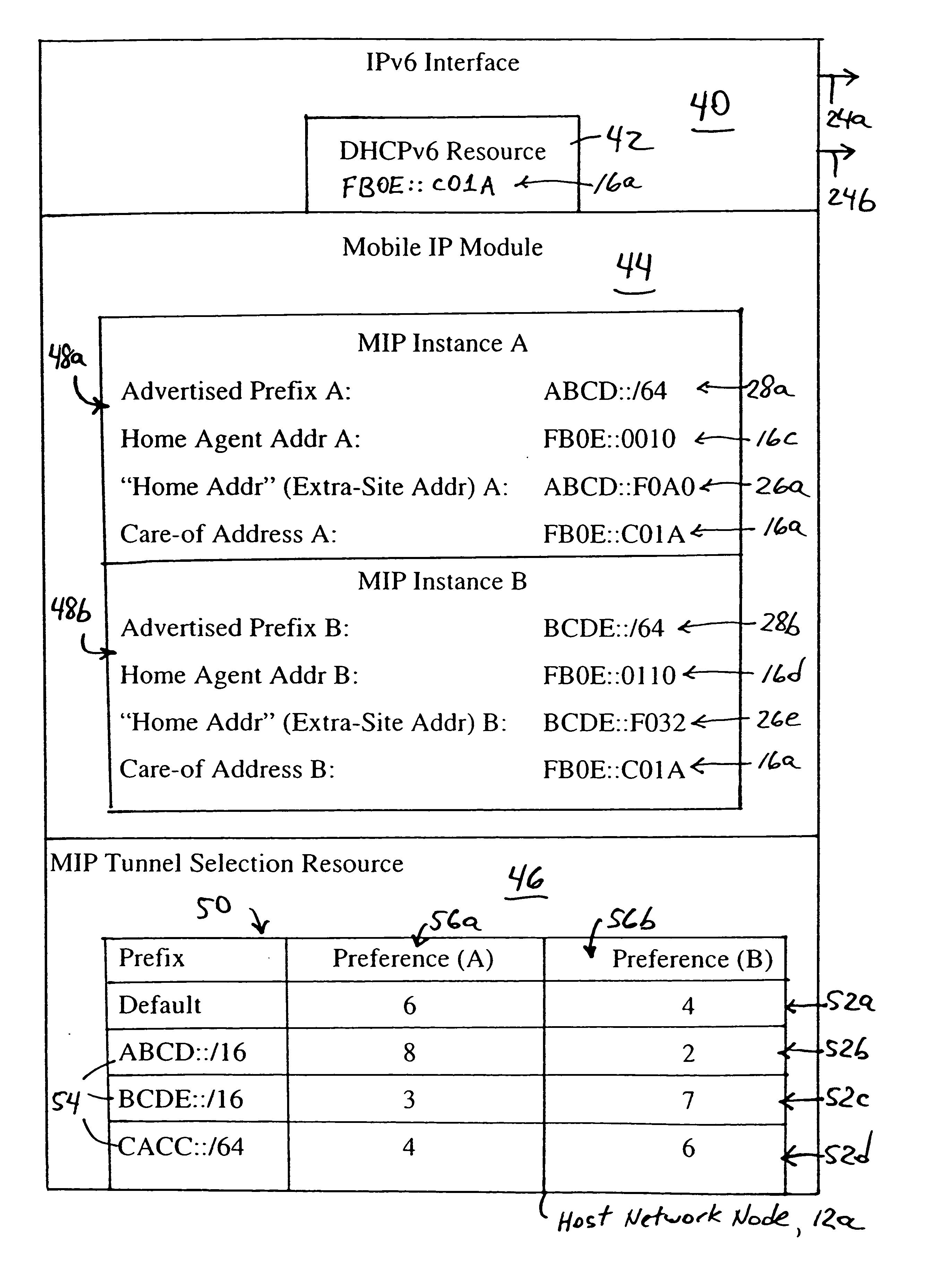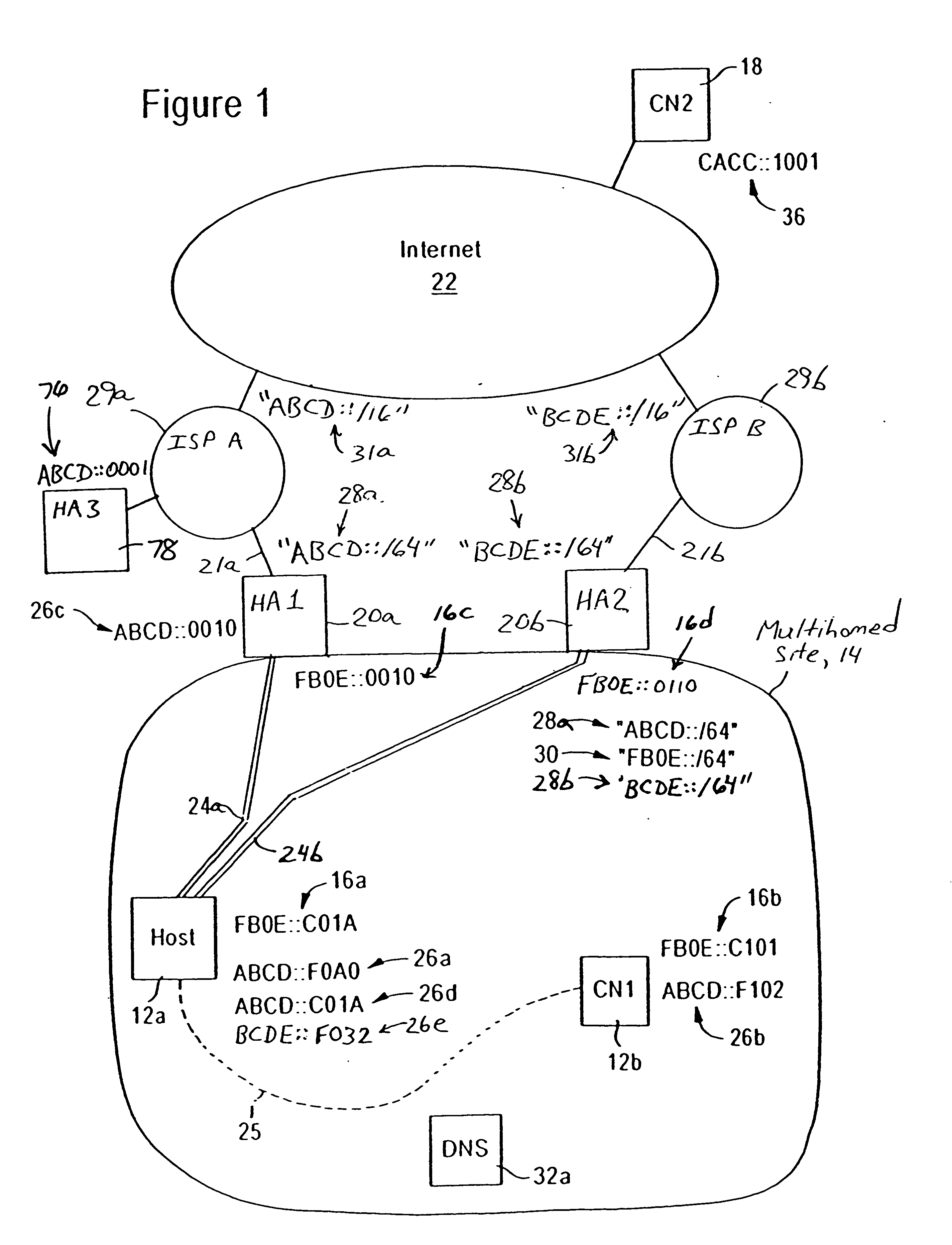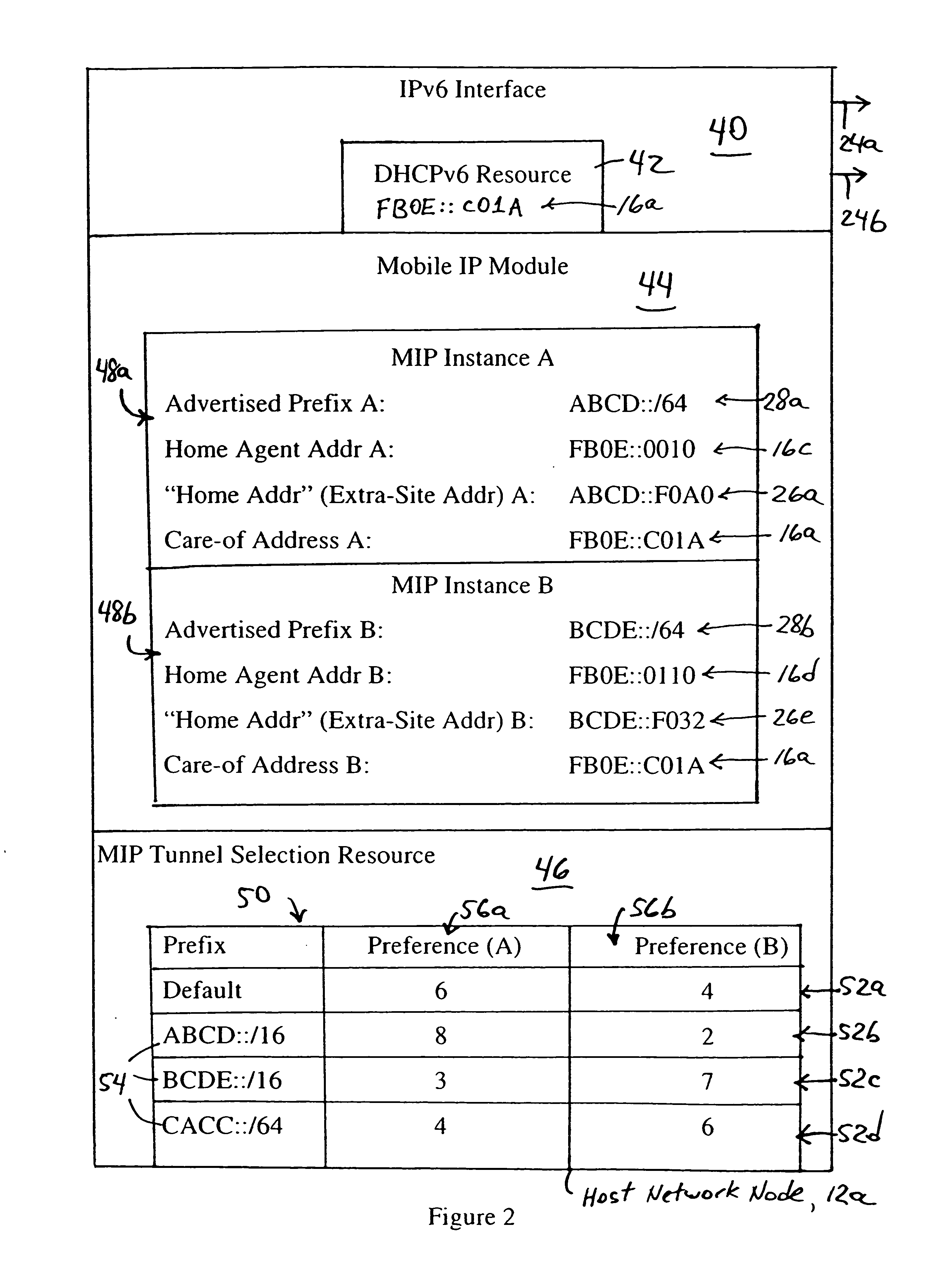Using multiple tunnels by in-site nodes for securely accessing a wide area network from within a multihomed site
a multi-homed site and wide area network technology, applied in digital computers, wireless network protocols, instruments, etc., can solve problems such as packet drop, multiplication of numbers, and inability to utilize network-based management systems that may be able to provide optimized routes
- Summary
- Abstract
- Description
- Claims
- Application Information
AI Technical Summary
Benefits of technology
Problems solved by technology
Method used
Image
Examples
Embodiment Construction
[0037] The disclosed embodiment is an enhancement of commonly-assigned, copending application Ser. No. 10 / 978,384, filed Nov. 2, 2004, entitled “Maintaining Secrecy of Assigned In-Site Addresses for IPv6 Nodes within a Prescribed Site During Access of a Wide Area Network”, the disclosure of which is incorporated in its entirety herein by reference. In particular, the above-incorporated application Ser. No. 10 / 978,384 describes a single gateway as an egress point for a prescribed site: the single gateway maintains a binding cache entry for each in-site network node that requires extra-site communications, the binding cache entry specifying that an extra-site address used by the in-site network node is reachable via a specified in-site address. The single gateway maintains a secure tunnel for communications with the in-site network node using the extra-site address within the site.
[0038] The disclosed embodiment expands on the above-incorporated application Ser. No. 10 / 978,384 by con...
PUM
 Login to View More
Login to View More Abstract
Description
Claims
Application Information
 Login to View More
Login to View More - R&D
- Intellectual Property
- Life Sciences
- Materials
- Tech Scout
- Unparalleled Data Quality
- Higher Quality Content
- 60% Fewer Hallucinations
Browse by: Latest US Patents, China's latest patents, Technical Efficacy Thesaurus, Application Domain, Technology Topic, Popular Technical Reports.
© 2025 PatSnap. All rights reserved.Legal|Privacy policy|Modern Slavery Act Transparency Statement|Sitemap|About US| Contact US: help@patsnap.com



